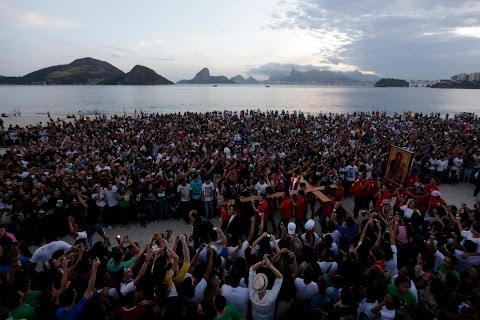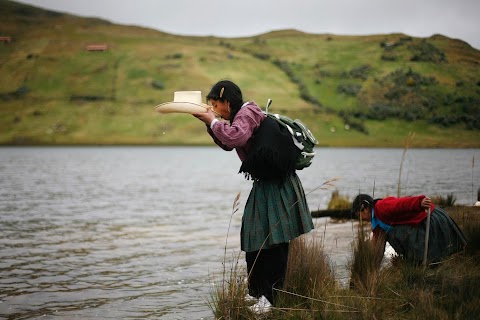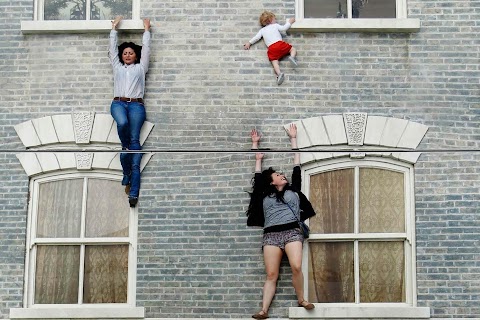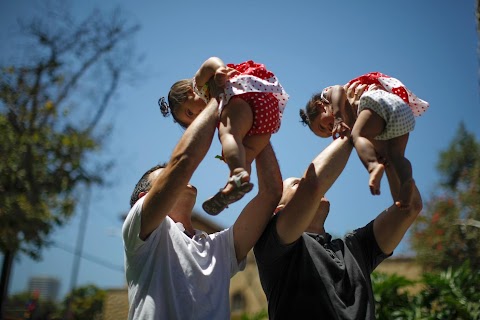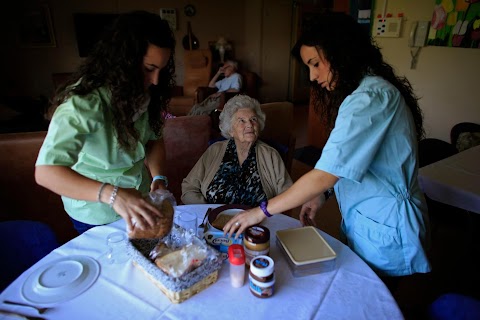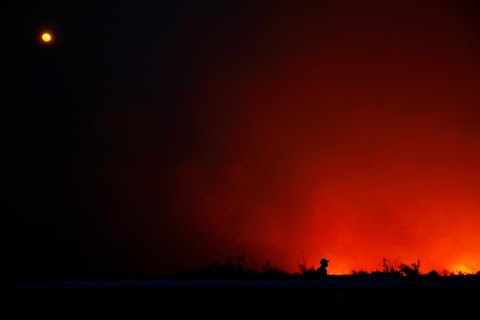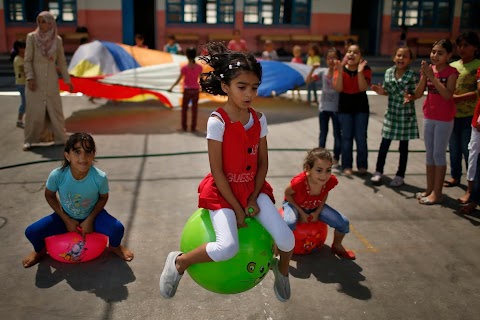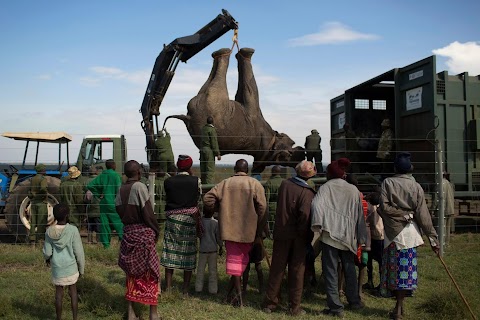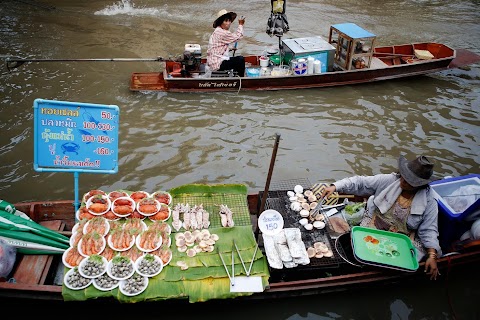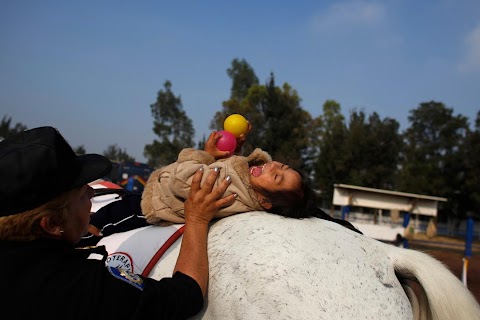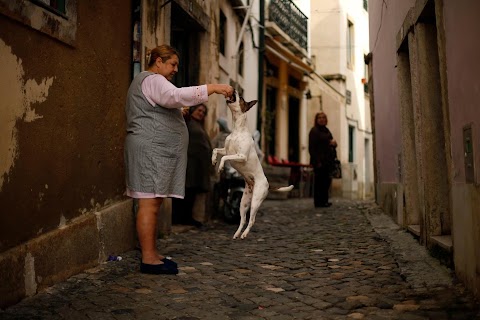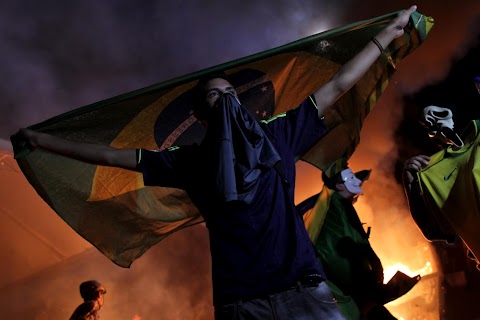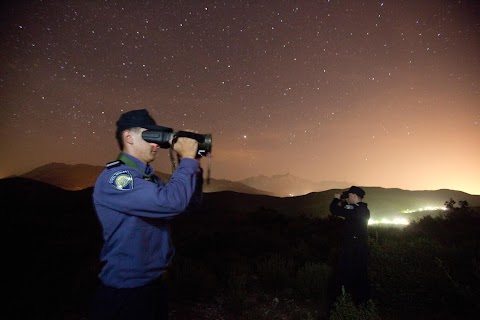
A new frontier
 Antonio Bronic
Antonio Bronic
As Croatia celebrated its accession to the European Union on July 1 with fireworks, music and cannon fire, European Council President Herman Van Rompuy told crowds in the capital Zagreb: “This will change the life of this nation for good.” One change is already underway: as Croatia becomes part of the external frontier of the EU bloc, it has beefed up security on its borders with non-EU nations, increasing its number of border police and updating their kit with thermal imaging cameras and infrared binoculars.

A border police officer patrols with a dog in eastern Croatia, not far from the border with Serbia. Both countries lie on the infamous "Balkan smuggling route", used to transport drugs, illegal migrants, weapons and other contraband from Africa and the Middle East to Western Europe.
Now, as Croatia ramps up control and seeks to combat this kind of traffic, it has almost tripled the number of police patrolling its borders over the past few years to reach around 6,000, and new large road crossings have had to be constructed to allow for a stricter form of passport and customs control.
More preparations will include better equipment for the police patrolling Croatia’s 1,400 km land frontier with non-EU neighbours, and cutting the number of border crossings to about half of what the country currently has.

In the picturesque town of Metkovic, Croatia’s border with Bosnia runs right down this street, leaving the woman seen here on the left in Croatia, and the woman on the right in Bosnia.
The divided road, which now has check points on both sides, makes popping across the street to the shops a complex task for residents. It also presents a challenge for police, who are charged with checking the hundreds of tourist cars that drive through on their way to Croatia’s Adriatic coast.
The set-up in the town highlights some of the difficulties involved in securing the new external EU border, which was once just a soft administrative line between Yugoslav republics, vaguely defined and ignored at will.
Slideshow

A border police officer inspects railway lines near the Croatia-Serbia border, patrolling the area between countries that form part of the Balkan smuggling route.

Police officers drive close to the border with Serbia in Lipovac. A report commissioned by the European Parliament last year said the Balkan route was one of the main five crime routes in Europe, also used for trafficking cocaine from South America.

Border police officers sit in their vehicle close to the frontier with Montenegro, from where many illegal immigrants from other parts of the Balkans, Asia and north Africa try to cross into the country as they attempt to make their way to EU nations further west.

Border police officers inspect a car near the Croatia-Serbia border in Tovarnik.

Another policeman looks through a pair of binoculars as he patrols the border with Serbia in Nijemci.

An officer looks through a thermal imaging camera near the Serbian border. Largely thanks to EU funds, Croatia's border police are now equipped with thermal cameras like this as well as infrared binoculars, able to spy movement from kilometers away.

A border police officer watches as a narcotics dog checks a bag by the frontier with Serbia in Bajakovo, one of Croatia's biggest and most important border crossings.

A police officer inspects a bus at the crossing with a sniffer dog.

A border policeman uses a torch as he checks a bus.

An officer inspects documents at the border crossing in Bajakovo. According to one border policeman at the checkpoint, 205 illegal migrants have been caught there over the last four months.

EU documents shine under ultra violet light at the crossing.

A Bosnian border police officer sits on the left, and his Croatian counterpart sits on the right at a new border crossing with Bosnia in Neum, south Croatia.

The large new Neum border crossing is visible in the distance, while the old border checkpoint stands in the foreground.

A border police officer patrols the frontier with Serbia in Tovarnik.

Border police inspect a car in the area.

A border police officer inspects an old house near the frontier with Serbia.

A police officer and his dog look at clothing left lying in a field in the area.

A Croatian border policeman monitors the frontier with Serbia in Nijemci.

Three figures are visible through a thermal camera used near the border.
"There have been cases of illegal migrants who attempted to slip over the border for ten days in a row."
Two months ago, I started working on a story about Croatia's border police as they prepare for the nation's accession to the EU and try to prevent illegal migrants from crossing into the country. For a member of the media, it is rare to hang out with the police for 24 hours, and I was afraid they would be stiff and uncooperative. How wrong I was. They were friendly and nice and, in the end, even took pity on my efforts to capture something dramatic on camera.
I visited three border crossings, two in the south, with Bosnia and Montenegro, and one in the east, with Serbia. The thing I was most interested in finding out was what sort of people try to cross the border illegally. I got my answer: they are mostly poor and unemployed citizens of Afghanistan, Syria and Albania, who want to reach rich European countries through Croatia in hopes of finding salvation there.
From talking to the policemen who have been working on the borders for years, I found out that some illegal migrants travel from Afghanistan for two months. They are really starving, thirsty, exhausted and scrappily dressed once they are caught. In some cases, they surrender voluntarily to the police just to get some food.
Those who are captured are returned to the country from which they crossed into Croatia, but that often does not stop them from trying again: there have been cases of illegal migrants who attempted to slip over the border for ten days in a row. One of the most farcical stories I heard while hanging out with the border guys was about illegal migrants who mistakenly entered a police van, thinking that it was transport arranged to take them to another country.
While shooting this story, I was unlucky in my own way. During the ten days I spent on assignment, I didn't manage to photograph a single illegal migrant in action. Just a day before my arrival on the border crossing with Serbia, one Afghan man was captured. A day after my departure, the police seized nine Syrians and two Albanians who had been hiding in a nearby village and waiting for a bus to their next destination.
Abandoned houses in local villages are often used as temporary shelters where they change their clothes or take a nap, always in a hurry, and frequently leave their old clothes scattered around the fields.
For the policemen, arresting mothers with small children is certainly the most difficult thing, and such cases are unfortunately not rare, they say. The crossings I visited are in sparsely populated ares, near villages or towns with only a handful of residents, all of them known to the police. That means every new face is easily recognised and observed with suspicion; I could feel it directed at me too. Because my car's number plates were not from the area, local policemen grew suspicious of me as soon as I arrived anywhere and immediately had me checked by radio.
Drugs are often smuggled on regular buses and one such potential shipment was found while I was with the police at Bajakovo. The police dog had reacted to a package on the bus but it turned out that none of the passengers owned it. Further checks showed that the packaged contained no drugs - smugglers probably sent it to test how easily illegal substances could be ferried over this crossing.


